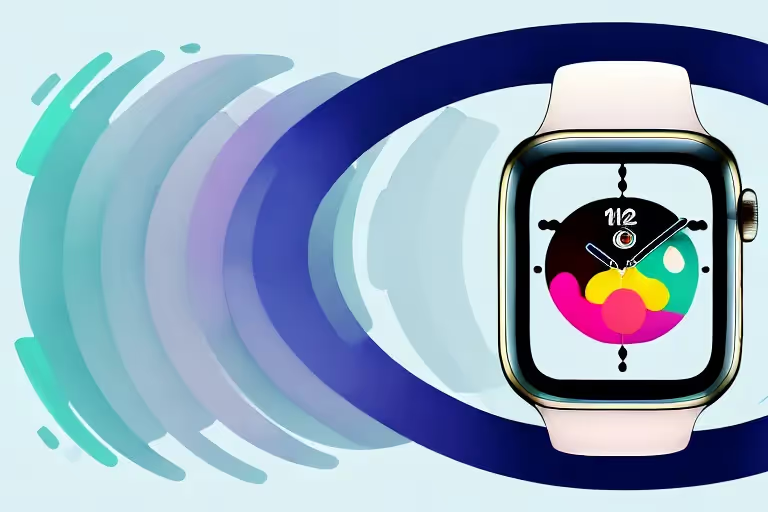Noise is all around us, constantly shaping our auditory experiences and impacting our overall well-being. Whether it's the rustling of leaves, the chatter of a busy cafe, or the soothing sound of rain falling, noise plays a significant role in our lives. In this article, we will delve deep into the differences between two types of noise: white noise and brown noise. By understanding the concept of noise in sound and examining the intricacies of these two distinct types, we can gain valuable insights into how they affect us and how we can harness their potential to improve our daily lives.
Understanding the Concept of Noise in Sound
Noise, in the context of sound, refers to any unwanted or random sounds that interfere with our ability to focus or relax. It can be characterized by its frequency, amplitude, and duration. While some noises may be pleasurable, such as the gentle hum of a fan or the crackling of a campfire, others can be disruptive and unsettling. By comprehending the nature of noise and its effects on our minds and bodies, we can gain a better understanding of how white noise and brown noise differ.
What is Sound Noise?
Sound noise, simply put, is any sound that is unwanted or considered background noise. It can manifest in various forms, ranging from the buzzing of electrical appliances to the sounds of traffic. Sound noise can be distracting, particularly when we are trying to concentrate or rest. It can disrupt our focus and hinder our ability to relax or sleep deeply.
Different Types of Sound Noise
Within the realm of sound noise, we can find a plethora of different types. These include environmental noises like the sounds of nature, traffic, or machinery, as well as artificially generated noises such as those emitted by electronic devices. White noise and brown noise are two examples of artificially created sounds that have garnered significant attention and become popular due to their potential benefits.
White noise, often compared to the sound of static on a television or radio, is a type of noise that contains equal intensity across all frequencies. It is often used to mask other sounds, as it can help drown out distractions and create a more peaceful environment. White noise machines and apps have become popular tools for promoting relaxation and improving sleep quality. The steady and consistent nature of white noise can help soothe the mind and block out disruptive sounds, allowing for a more restful sleep or increased focus during work or study.
Brown noise, on the other hand, differs from white noise in terms of its frequency distribution. While white noise contains equal intensity across all frequencies, brown noise has a higher intensity at lower frequencies and gradually decreases in intensity as the frequency increases. This creates a deeper and more soothing sound, often compared to the sound of a waterfall or a low rumble. Brown noise is believed to have a calming effect on the mind and can promote relaxation and concentration. Some people find it helpful for reducing stress and anxiety, as well as aiding in meditation or creative activities.
Understanding the differences between white noise and brown noise can help individuals choose the type of sound that best suits their needs and preferences. Whether it's using white noise to create a peaceful sleep environment or utilizing brown noise to enhance focus and relaxation, incorporating these sounds into our daily lives can have a positive impact on our well-being. Exploring the world of sound noise and its various forms allows us to discover new ways to optimize our environments and improve our overall quality of life.
An In-depth Look at White Noise
White noise is a form of sound that contains all audible frequencies in equal amounts. It is a consistent sound that masks other sounds in the environment, creating a soothing background noise. The term "white noise" is derived from white light, which consists of all visible light wavelengths blended together. Similarly, white noise combines all audible frequencies, creating an even sound that is devoid of pronounced peaks or valleys.
Defining White Noise
White noise is often described as a "hissy" or "static" sound that is similar to the sound of a television or radio tuned between stations. It is created by combining sounds across the entire frequency spectrum and amplifying them equally. This results in a sound that is uniform and constant, allowing it to effectively mask other sounds. Many individuals find white noise to be soothing and conducive to relaxation and concentration.
Common Uses of White Noise
White noise has found practical applications in various domains. It is frequently used in sound masking systems to create a uniform background noise that masks distracting sounds in crowded places such as offices, libraries, and hospitals. White noise machines or apps are also popular sleep aids, as their consistent sound can help drown out disturbances and promote a more peaceful and uninterrupted sleep environment.
The Benefits and Drawbacks of White Noise
The benefits of white noise extend beyond its ability to mask other sounds. By neutralizing sudden changes in decibel levels, white noise can create a more stable sonic environment and promote relaxation. It can also enhance focus and productivity by reducing the impact of background distractions. However, it is important to note that white noise may not be suitable for everyone. Some individuals may find it too intense or stimulating, and prolonged exposure to high volumes of white noise can potentially lead to hearing damage or exacerbate existing hearing conditions.
Unraveling the Mystery of Brown Noise
Brown noise, also known as red noise or random walk noise, is another type of sound that has gained attention due to its unique properties. Unlike white noise, which contains all frequencies equally, brown noise exhibits a heavier emphasis on low-frequency sounds. This gives it a deep, rumbling quality that is often described as similar to the sound of a waterfall or the crashing of ocean waves.
What is Brown Noise?
Brown noise is named after Robert Brown, a British botanist who discovered and studied the phenomenon of random motion in microscopic particles suspended in a fluid. Brown noise is characterized by a power law distribution, meaning that the energy of the sound decreases as the frequency increases. This results in a rich, deep sound that is soothing and can evoke a sense of calm and relaxation in many individuals.
How is Brown Noise Generated?
Brown noise can be created by amplifying low-frequency sounds and gradually decreasing the amplitude for higher frequencies. This process effectively accentuates the low-frequency components, resulting in a sound that is often likened to the rumbling of thunder or the gentle patter of rain on a roof. Brown noise is also found abundantly in nature, such as the sound of wind blowing through trees or the crackling of a campfire.
The Practical Applications of Brown Noise
Similar to white noise, brown noise has been used in various applications both for functional and therapeutic purposes. It is often employed in relaxation and meditation practices, as its deep and enveloping sound can help induce a state of tranquility and focus. Brown noise can also be beneficial for individuals experiencing difficulties falling asleep, as it can create a peaceful ambience and drown out other noise distractions.
White Noise vs Brown Noise: A Comparative Analysis
Now that we have examined the characteristics and applications of white noise and brown noise individually, let us delve into a comparative analysis to better understand their similarities and differences. Despite their distinct qualities, both white noise and brown noise share certain similarities in their effects and potential benefits.
Similarities Between White and Brown Noise
White noise and brown noise both have the ability to create a soothing background sound that masks other noise distractions. This can enhance relaxation, promote concentration, and create a more peaceful environment. They are often used in sound masking systems, sleep aids, and meditation practices to facilitate these benefits.
Key Differences Between White and Brown Noise
The main difference between white noise and brown noise lies in their frequency content. White noise contains all frequencies in equal amounts, resulting in a uniform sound, while brown noise emphasizes low-frequency sounds and gradually decreases in intensity as the frequency increases. This distinction gives brown noise a more pronounced and rumbling quality compared to the hissy and static-like nature of white noise.
The Science Behind White and Brown Noise
Understanding the physics behind sound waves and how our brain interprets different noises can provide further insight into the effects of white noise and brown noise on our well-being.
The Physics of Sound Waves
Sound waves are composed of pressure fluctuations that travel through a medium, such as air or water. These waves can be described in terms of their frequency, amplitude, and wavelength. The frequency corresponds to the pitch or perceived "highness" or "lowness" of a sound, while the amplitude represents the intensity or volume. The wavelength refers to the distance between successive compressions or rarefactions in the wave.
How Our Brain Interprets Different Noises
In the brain, different areas process and interpret various auditory inputs. The auditory cortex is responsible for analyzing sound frequencies and patterns, while the limbic system, which includes the amygdala and hippocampus, plays a key role in emotional responses to sound. White noise and brown noise can stimulate these areas in different ways, with white noise providing a consistent and steady signal that can promote relaxation, and brown noise evoking a sense of calm and tranquility through its deep and soothing nature.
As we have discovered, white noise and brown noise each have their unique characteristics and potential benefits. Whether you prefer the uniform sound of white noise or the deep rumblings of brown noise, incorporating these sounds into your daily life can create a more serene and soothing environment. The Aura Health App offers a wide range of audio experiences, including white noise and brown noise, allowing you to explore and discover the sounds that best resonate with you. Download the Aura Health App today and unleash the power of sound to enhance your well-being.
Aura is Your All In One App for Meditation, Mindfulness Wellbeing
Find peace every day with one app for your whole well-being. There is no one-size-fits-all solution to mental well-being. Aura is the first all-in-one wellness app that learns how to best help you. Discover an endless library of expert-created tracks for your well-being, all taught by the world’s best coaches, therapists, and storytellers. With Aura's personalized recommendations, you can find peace every morning, day and night.



.webp)






.avif)

%20(1).avif)


.avif)
.avif)
.webp)


.avif)


















































































































.avif)

















.svg)









